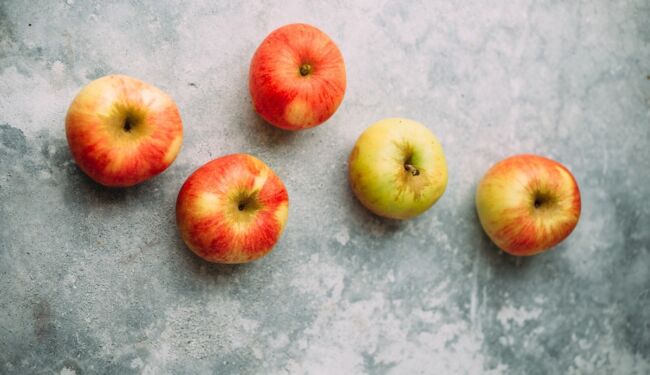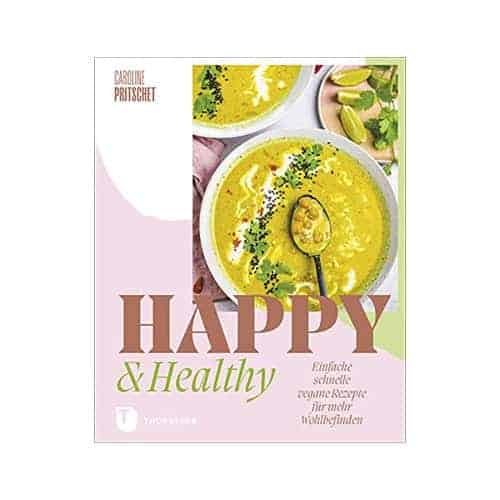Unbelievable how quickly the summer was over once again. As soon as you take the sandals out of the closet, you can pack them away again. But late summer also has its great sides, especially if you take a look at the Superfood -calendar. This time I am not talking about superfoods like Chia Seeds or goji berries, but of regional fruits and vegetables. Today I would like to introduce you to a classic. I am sure you will be surprised how healthy apples actually are.
Can an apple compete with superfoods?
“An Apple a Day Keeps the Doctor Away?” Advertising slogan or is there actually some truth to it here? The apple is very popular in Germany and according to statistics, we consume a whopping 18 kilograms per capita in Germany. It’s actually true that apples are incredible nutrient bombs. One apple contains as many as 30 vitamins, trace elements, fiber, minerals and secondary plant compounds. There is hardly any food that contains as many complex and healthy micronutrients as an apple. Vitamin C, E, B1, B2, B6 and vitamin E have a particularly positive effect on the immune system and protect the cells. The minerals potassium, iron, iodine and zinc are essential for our nerves and muscles. In addition, there are fibers such as pectin that promote healthy digestion and keep you full for a long time.
Here’s a special tip: apples are incredibly valuable and contain a variety of micronutrients. You should eat the apple with the skin, because most of the valuable ingredients are located directly under the skin. So you can eat the apple “completely” without hesitation. Did you know that you can also eat the core? Oh yes, because it contains a relatively large amount of iodine.
Apples catch free radicals
Free radicals are on everyone’s lips because they can damage our cells and are partly responsible for the aging process of our body. The antioxidants contained in apples can catch these dangerous free radicals and make them harmless. In this context, especially the secondary plant substances such as polyphenols are highly interesting. The quercetin (yellow-red pigment) contained in the skin of the apple is said to be one of the most powerful antioxidants and also has an anti-inflammatory effect.
Researchers at the University of Verona have found that quercetin and other flavonoids have anti-viral, anti-microbial, anti-inflammatory and anti-allergic effects and can have a positive impact on human cells. This all sounds very complex, but it is certain that you can protect your body from free radicals with apples and especially the skin of apples. So not’s like ran to the Superfood .
Which varieties are the healthiest?
There are indeed differences here, because not every apple variety is as healthy as the other. Basically, apples should be sun-ripened and have a gorgeous red color. The varieties Gravensteiner, Boskop, Berlepsch or Idared perform particularly well here. These are traditional varieties that convince with high vitamin and mineral content. Newer varieties such as Granny Smith or Pink Lady from the supermarket do not perform as well. The second rule of thumb is the transport route, because the shorter it is, the fresher and richer the fruit. So maybe ask Dr. Google where the nearest organic farmer or farm store is in your area? It will be worth it. A healthy and low-calorie snack with 50-70 kilocalories per piece, apples are definitely.
Organic quality yes or no?
We are used to buying fresh and shiny apples in the supermarket all year round. But many varieties are transported thousands of kilometers to us and treated with pesticides. Therefore, it is even more important to pay attention to organic quality. Especially in September, the apple harvest takes place in Germany. Reason enough to pay attention to domestic varieties from now on.
Organic apples are free of pesticides and also have a much better eco-balance. So you are on the safe side if you buy organic and regional.
Which is healthier? Apple juice or the whole apple?
Research has clearly shown that eating a whole apple is healthier than drinking apple juice. Here, even the naturally cloudy apple juice does not fare well at all. I admit that I have always firmly assumed that I was doing something good for my body by drinking organic, naturally cloudy apple juice. Here, the pure facts show that apple and apple juice could not be more different. This is due to the following reasons:
- the Whole fruit basically contains much more nutrients.
- The sugar from the whole fruit enters the blood more slowly (resulting in agentler rise in blood sugar) due to the intact structure with fiber.
- The skin of apples contains a plant substance called phlorizin in concentrated form. This ensures that the absorption of glucose in the small intestine is inhibited. This means that less glucose flows into the circulation, which dampens the release of insulin.
- Eating whole fruit prevents overconsumption, as I very quickly gulp down 8-10 fruits at once with a glass of juice, without benefiting from the positive points in the above.
TIP: Juices are always best drunk diluted as spritzer in a 3:1 ratio, which means 3 parts water and one part juice.
Organic apples best to store
The healthy beauties are best left to mature “alone” and alone. This is best done in the vegetable cooler of your refrigerator or in a cool storage cellar. Otherwise, of course, it is best to eat the apples as soon as possible, or just make something great out of them. Grandma’s applesauce says hello.
Vegan recipes with apples
You are looking for healthy, vegan recipes with apples? Maybe you feel like caramelized apples and pecans, the best vegan apple crisp easy vegan apple muffins with crumble or Cake with caramelized apples , pie grandma’s style. I wish you already a lot of fun while enjoying!

